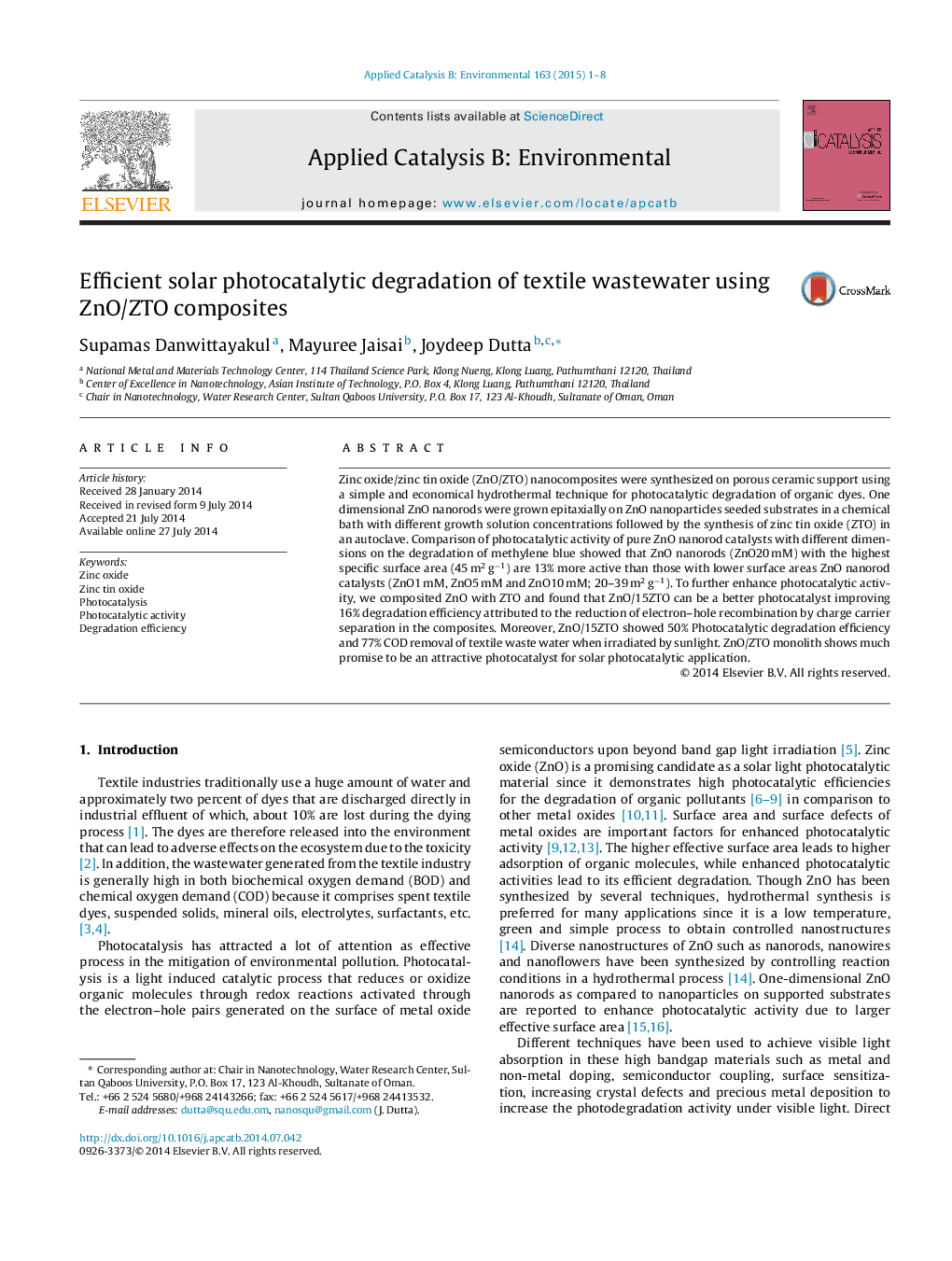| Article ID | Journal | Published Year | Pages | File Type |
|---|---|---|---|---|
| 44849 | Applied Catalysis B: Environmental | 2015 | 8 Pages |
•High aspect ratio ZnO nanorod induced photodegradation of organic contaminants.•16% improvement of solar photocatalytic activity with ZnO/ZTO composites.•77% COD removal of textile wastewater under sunlight by using ZnO/ZTO photocatalyst.
Zinc oxide/zinc tin oxide (ZnO/ZTO) nanocomposites were synthesized on porous ceramic support using a simple and economical hydrothermal technique for photocatalytic degradation of organic dyes. One dimensional ZnO nanorods were grown epitaxially on ZnO nanoparticles seeded substrates in a chemical bath with different growth solution concentrations followed by the synthesis of zinc tin oxide (ZTO) in an autoclave. Comparison of photocatalytic activity of pure ZnO nanorod catalysts with different dimensions on the degradation of methylene blue showed that ZnO nanorods (ZnO20 mM) with the highest specific surface area (45 m2 g−1) are 13% more active than those with lower surface areas ZnO nanorod catalysts (ZnO1 mM, ZnO5 mM and ZnO10 mM; 20–39 m2 g−1). To further enhance photocatalytic activity, we composited ZnO with ZTO and found that ZnO/15ZTO can be a better photocatalyst improving 16% degradation efficiency attributed to the reduction of electron–hole recombination by charge carrier separation in the composites. Moreover, ZnO/15ZTO showed 50% Photocatalytic degradation efficiency and 77% COD removal of textile waste water when irradiated by sunlight. ZnO/ZTO monolith shows much promise to be an attractive photocatalyst for solar photocatalytic application.
Graphical abstractFigure optionsDownload full-size imageDownload as PowerPoint slide
